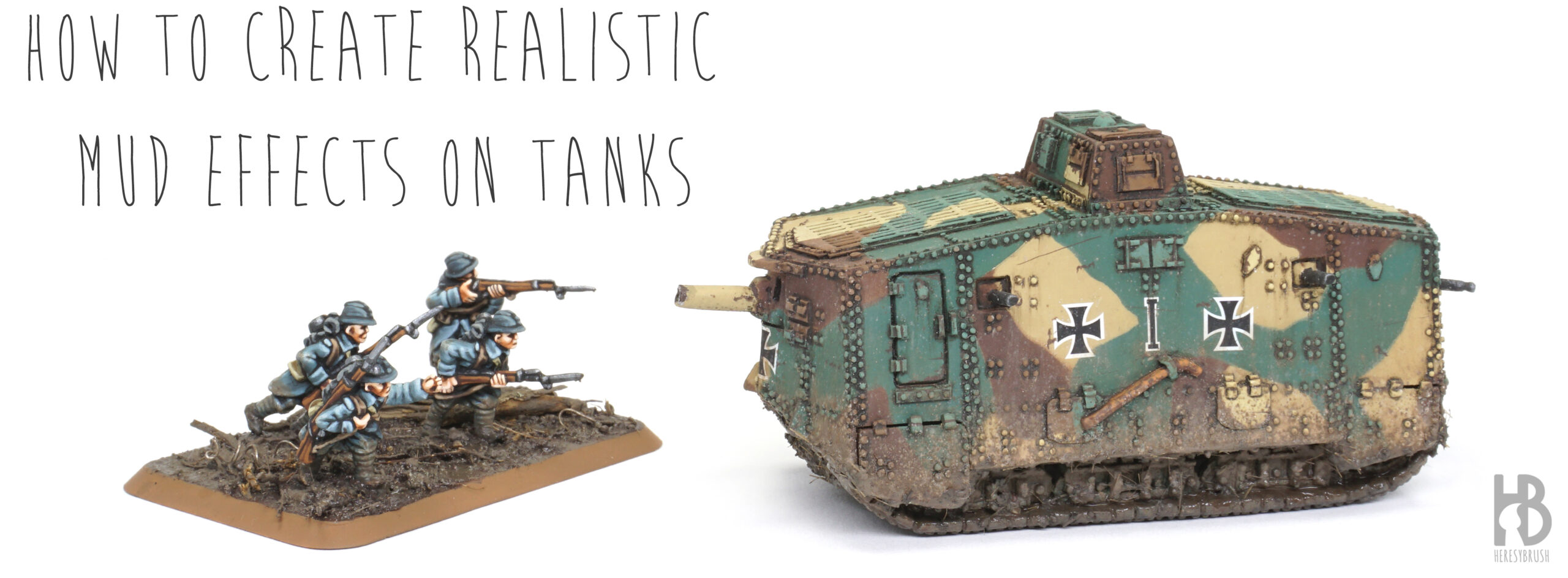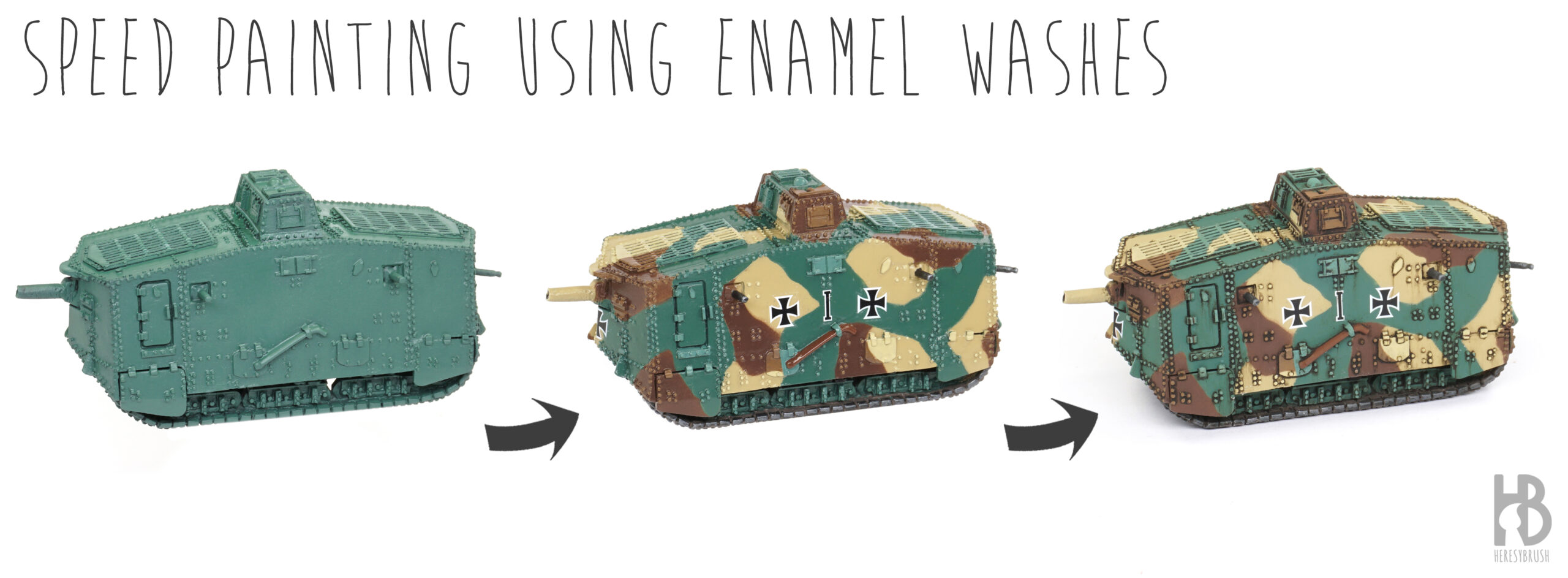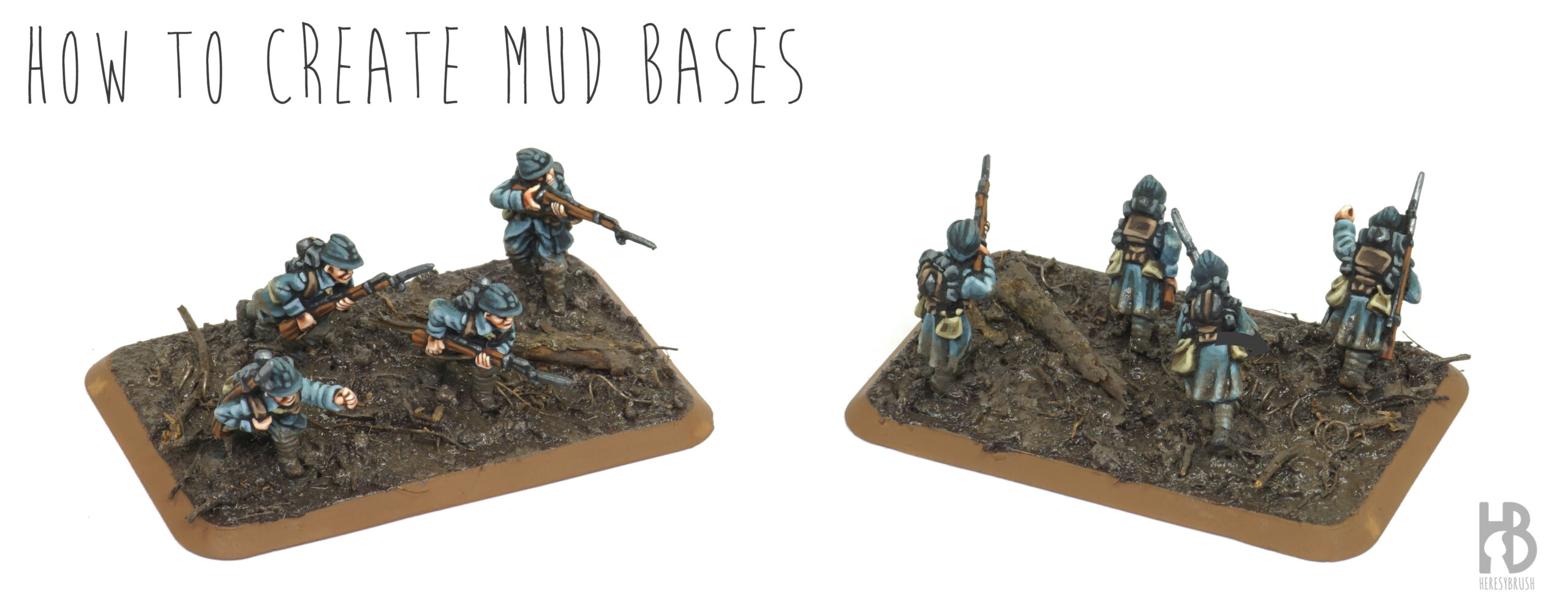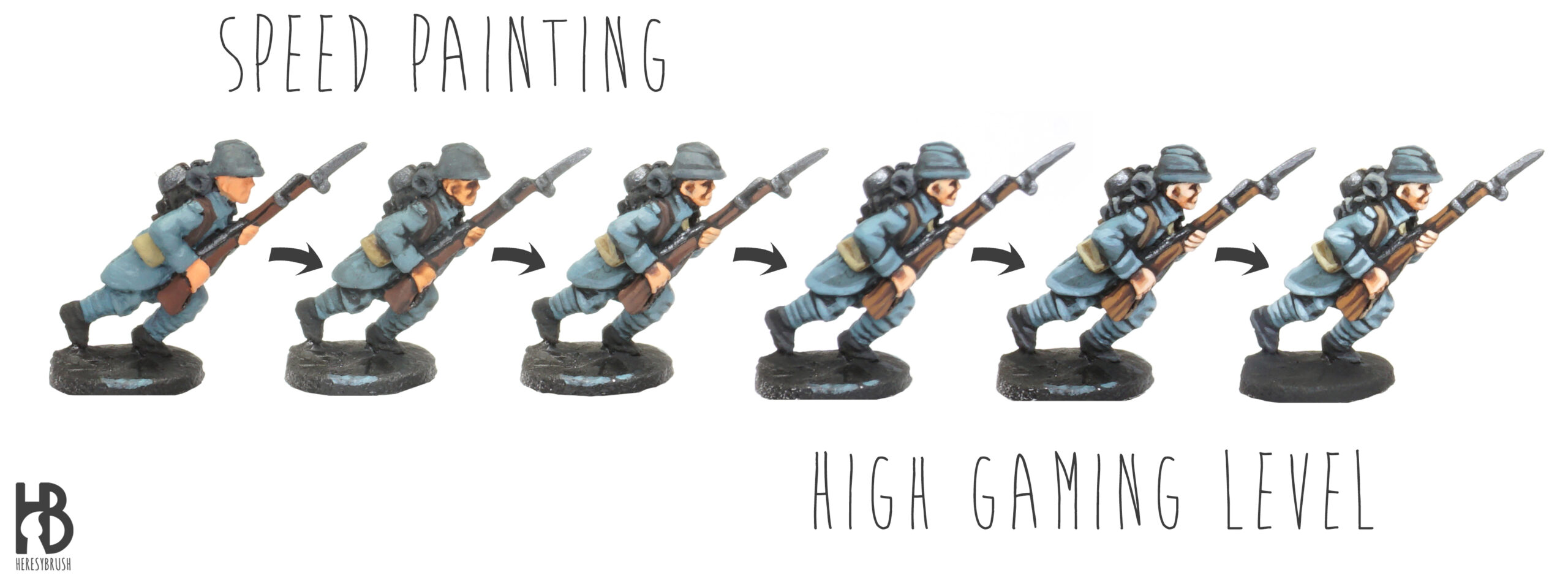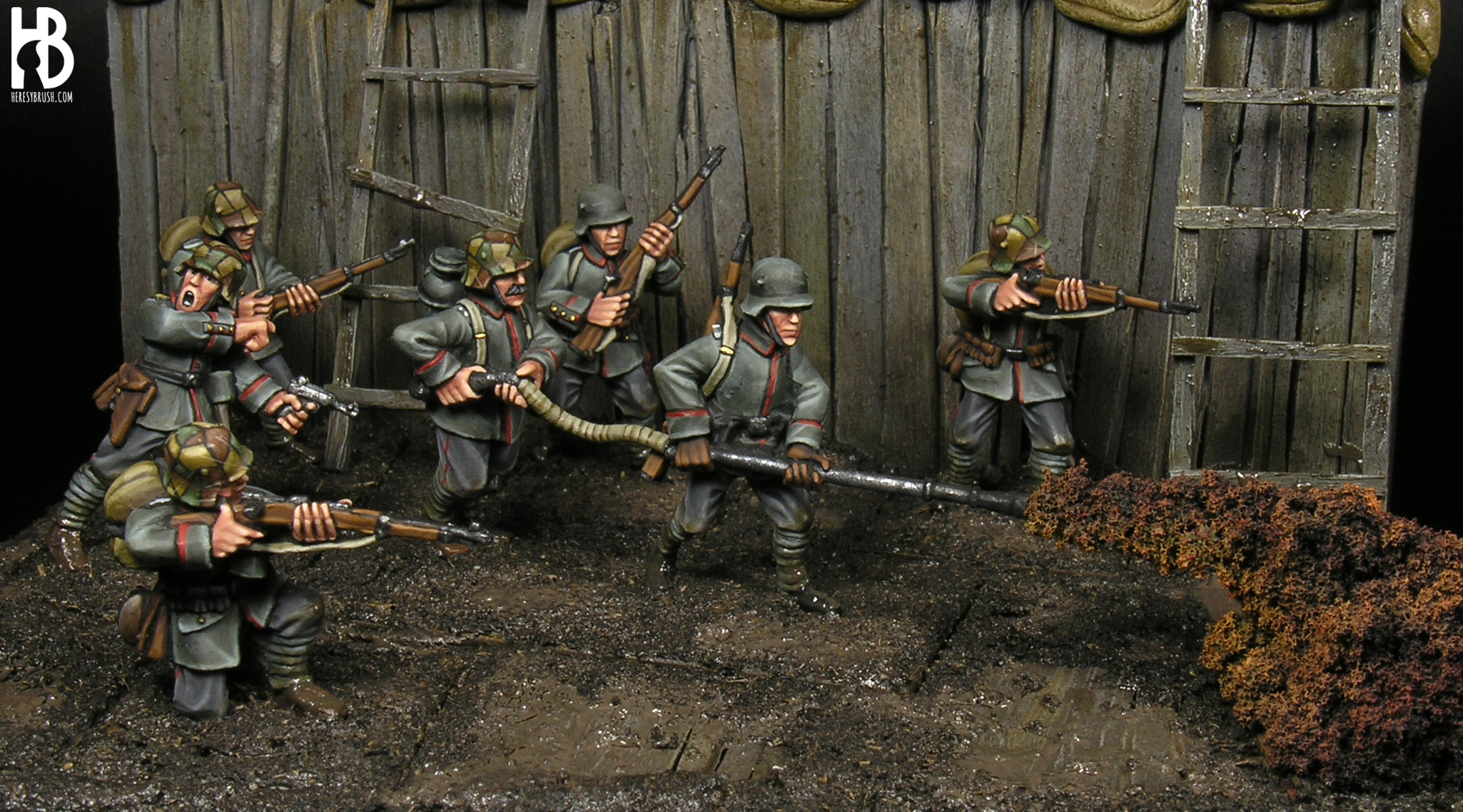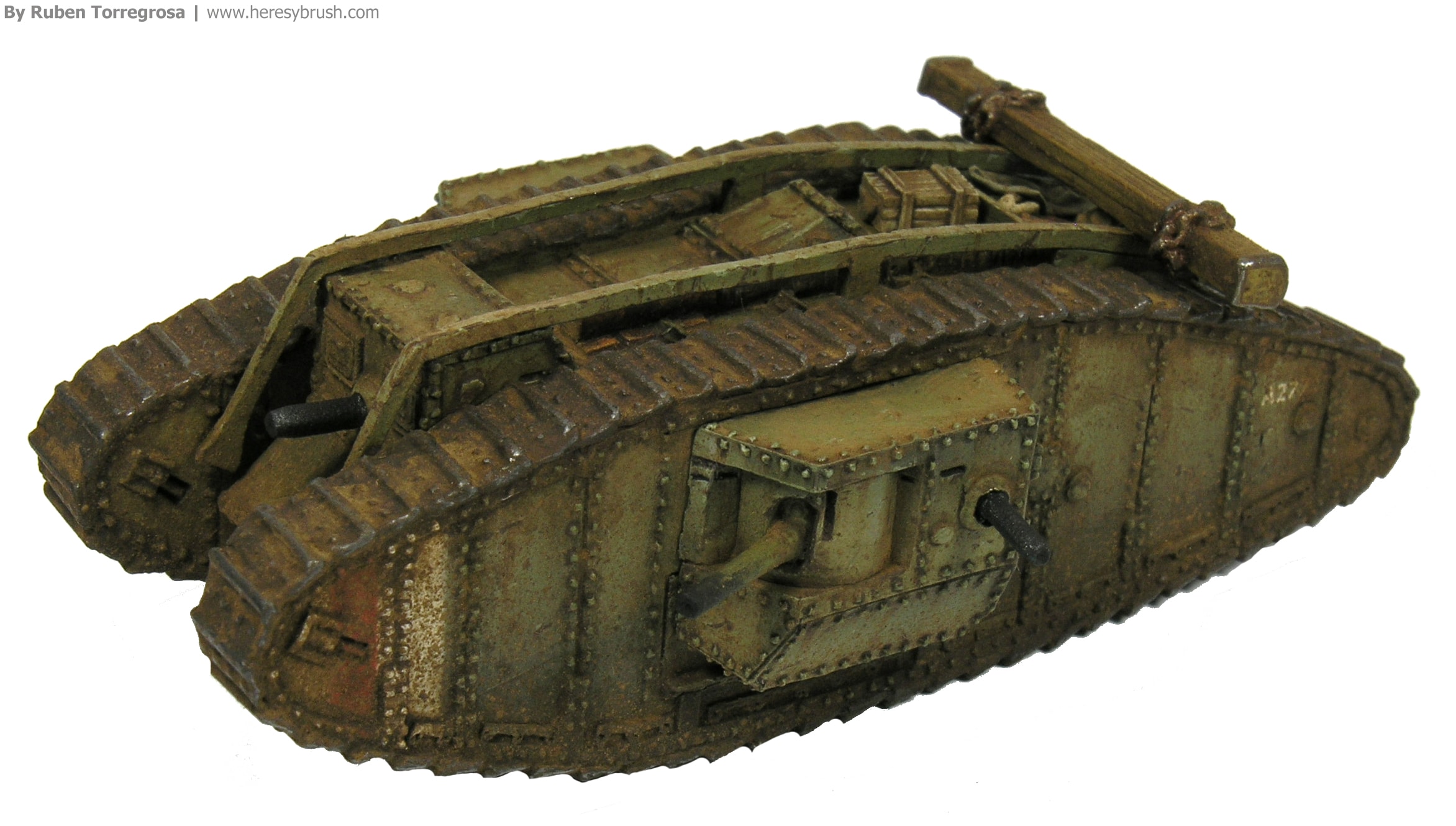This article was originally published on the Battlefront website, here. This article is a follow-up of Painting WWI German AV7 tank: the art of enamel washes. As demonstrated recently in another tutorial on painting Painting WWI French Fusiliers: How to create mud bases, the idea is to create mud effects rather than simply painting them. While wargamers often resort to the dry-brush technique using acrylics to simulate mud, the results, while interesting, may lack the texture typically associated with this particular effect. To address this, we can turn to specialized products designed to achieve hyper-realistic mud effects. These products not…
Painting the WWI German AV7 tank: the art of enamel washes
This tutorial was originally published on the Battlefront website, here. Acrylic paints are the most popular choice for wargamers, and in most cases, the only option on the painting bench. This preference is quite logical, as acrylic paints are readily available, non-toxic, quick-drying, and overall user-friendly. However, if we take a closer look at what Scale Modelers do, we will discover that they employ a variety of paint types, including acrylics, lacquers, oils, enamels, and powder pigments. The distinct features of each type of paint can be utilized to perform specific steps or achieve particular effects. Therefore, having a understanding…
How to create mud bases
This article was originally published on the Battlefront website: here. As wargamers, we frequently opt to paint bases rather than create them. While it is true that we usually incorporate some form of texture, often achieved by adhering sand with glue, the subsequent step typically involves multiple layers of drybrushing painting. However, for the sake of achieving more authentic bases and scenery, it is advisable to create the texture entirely instead of relying on painting. A notable example is mud; painting mud effects can be quite challenging, while creating realistic mud effects becomes remarkably straightforward when employing the right tools…
Painting 15mm WWI French Fusiliers: Combining washes and layering
Wargamers frequently find themselves seeking a balance between painting and gaming, which often leads them to prefer fast painting techniques. These methods are typically straightforward and swift, and, importantly, highly effective. However, it is worth noting that the trade-off is often between speed and quality, with quality being inversely proportional to the time invested. In this tutorial, we will explore the fusion of a fast-painting technique that involves washes with a more sophisticated method by incorporating successive layers of highlights. To clarify, we will begin with the conventional ‘base + wash + highlight’ technique and progressively enhance our results…
Trench and mud
I had the great opportunity to prepare a diorama for the cover of Wargames Soldiers and Strategy #90, where I have represented one of the probably most charismatic scenes of the last century wars, a trench raiding. More specifically, a German counter attack to take a trench section back. I wanted to share with you some details addressing the preparation of this diorama, although you will actually find more information inside the magazine. Additionally, in this very same WSS issue I have published a complete step-by-step painting guide of the Spanish 1898 colonial army, using the new miniatures from 1898…
Extreme weathering in 15mm: Mark IV
Almost two years ago I received a number of lovely 15mm WWI tanks from Battlefront Miniatures, and I started immediately working on a video-tutorial to explain how to paint a British Mark IV tank. I completed the first part of the tutorial regarding how to paint the base color and published the video (see below). Nevertheless, the poor quality of the video discouraged me from recording a second part. Instead, I put the tank into a box with the idea of buying a new video camera in the future. Unfortunately, I haven’t had the chance (nor the money) to buy…
